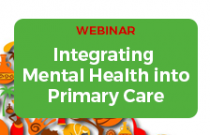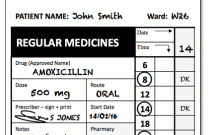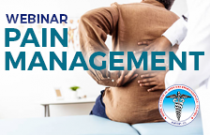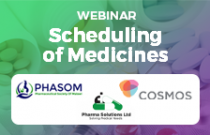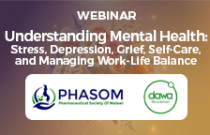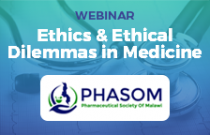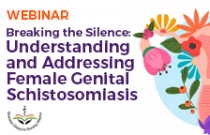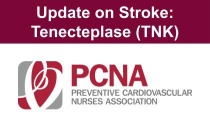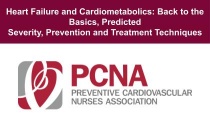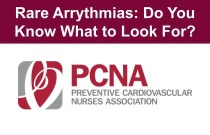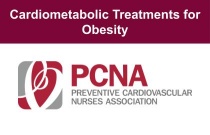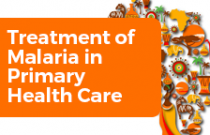DEMO ORAL PREP
Johns Hopkins University Affiliate and WHO
This blended learning course combines in-person and online learning and practice activities focused on building and strengthening the capacity of a health worker to provide clinical management of client selection and use of oral PrEP. The total amount of hours estimated for completion is 8 hours.
Integrating mental health into primary care using technology-supported, collaborative, stepped-care, and task-shifting approaches
Dr. Theddeus Iheanacho Associate Professor of Psychiatry
Lecture will focus on potential opportunities and barriers to integrated mental health and primary care
The Rudiments of Project Management
Prof Kayode Osagbemi
Discussing the basics principles of health project management
Prise en charge d'un Etat de mal épileptique
DR MUMBERE VAGHENI MARTIAL
DUE TO CONNECTIVITY ISSUES WE HAVE TO CANCEL THIS WEBINAR Epilepsy remains the most common serious neurological disorder and is one of the world’s most prevalent noncommunicable diseases. Epilepsy is expected to affect 50 million individuals worldwide, with over half of them living in developing countries. Due to the lack of....
Role of primary health workers in cervical cancer elimination
Dr Valerian Mwenda; MBChB, M.Sc., PhD
This session explores the concept and rationale behind cervical cancer elimination, highlighting the key challenges and opportunities in the region. It also examines the critical role Primary Health Care Workers (PHCWs) can play in advancing elimination efforts, from prevention and early detection to advocacy and patient support....
Pain Management
Dr.Sserusiba Hassan
CPD for all clinical officers on how to manage pain in all patient categories
Scheduling of Medicines
Associate Professor Felix Khuluza
This webinar is aimed at uplifting understanding on scheduling of medicines by pharmacy professionals.
Understanding Mental Health: Stress, Depression, Grief, Self-Care, and Managing Work-Life Balance
Ms Tabitha Msukunika
Mental health is one of the important aspects of human well-being. This webinar aims at enhancing understanding on mental health. Specifically, we will look at stress, depression, grief, self-care, and managing work life balance.
Pneumonia in Children in Sub-Saharan Africa: Burden, Risk Factors, Aetiology, Management and Prevention
Dr David Moore
This lecture will highlight the importance of pneumonia in African children, including epidemiology, causative agents, treatment options and preventive strategies.
Ethics and Ethical Dilemmas in Medicine
Dr Daniel Kaonga
This lecture is aimed at unfolding ethics and ethical dilemmas in medicine.
Breaking the Silence: Understanding and Addressing Female Genital Schistosomiasis
Ms Sedonia Abapori Adabugah
A series of educational webinars with them for nurses and midwives across Africa and hopefully this will lead into some project work in Ghana as well.
Update on Stroke: Tenecteplase (TNK)
Shavonne Williams
1.00 Hours
This course provides an in-depth review of the latest research on Tenecteplase for acute stroke management, offering insights into improving outcomes through faster treatment. Learn critical strategies for reducing door-to-needle time, while exploring the advantages, contraindications, and best practices for administering Tenect....
Heart Failure and Cardiometabolics: Back to the Basics, Predicted Severity, Prevention and Treatment
Kim Newlin
0.75 Hours
At the end of the course, you will be able to discuss modifiable and non modifiable risk factors for heart failure (HF), review current research in treatment of HF highlighting novel drug classes that treat diabetes and obesity, examine impact of social determinants of health on access to care and adherence to treatment includin....
Rare Arrythmias: Do You Know What to Look For?
Dan Sorajja
0.75 Hours
Stay ahead of the curve with advanced insights into rare arrhythmias, from atrial to ventricular disorders. This course will equip you with the knowledge to recognize critical rhythm disturbances, understand their underlying causes, and enhance your diagnostic and treatment strategies. Strengthen your clinical practice and impro....
Cardiometabolic Treatments for Obesity
Angela Golden
0.75 Hours
This course provides an in-depth exploration of cardiometabolic conditions, focusing on the latest advancements in obesity treatments and their cardiac implications. Learners will gain a clear understanding of pharmacokinetics for novel and traditional weight loss therapies, including SGLT2 inhibitors and GLP-1 agonists, and lea....
Lurking Lp(a): Hiding Just Below the Surface
Lisa Maher, and Kathy Byrne
0.50 Hours
While Lp(a) levels are generally hereditary in nature, other factors can cause elevated levels. Learn about current guidelines - directed medical therapies, and how Lisa Maher, DNP, ARNP, FNP - BC, FPCNA, and Kathy Byrne, MSN, CRNP, CCRN. apply these guidelines into clinical practice.
Leadership Series 5 : Mentorship
Yvonne Commodore - Mensah
2.00 Hours
At the end of this course, learners will be able to discuss the benefits of mentorship for the mentee, mentor and organization. Join our expert panelists while they discuss their journey with mentorship and share tips for building an effective mentor-mentee relationship and ways to get involved with mentorship.
Treatment of Malaria in Primary Health Care
Dr David Matthew
Malaria is a life-threatening disease caused by parasites of the genus Plasmodium. Transmission: Spread through the bites of infected Anopheles mosquitoes. Impact: Affects millions each year, primarily in tropical and subtropical regions.
2025 Filipino Nursing Diaspora Day Webinar
U.S. Army Colonel (Retired) Bob Gahol MBA, MPA, MMAS, MSS, BSN, RN, FNYAM
The Filipino nursing diaspora is one of the largest and most influential healthcare communities worldwide. Filipino nurses have continually demonstrated exceptional skill, dedication, and compassion from the Philippines to global healthcare systems. This keynote session will explore the multifaceted impact of Filipino nurses acr....
Understanding Drug Interactions
Mrs Chikhulupiliro Chimwaza Yiwombe
This webinar has been organized to increase understanding on drug interactions. We will look at different types of drug interactions and also be able to discuss mechanisms behind these drug interactions.
Health systems and Tobacco cessation: Scaling up interventions for impact
Dr. Leon Ogoti
Discussing how healthcare workers and public health advocates can champion for the introduction of tobacco cessation and allied services from the primary healthcare level and why this is necessary.

